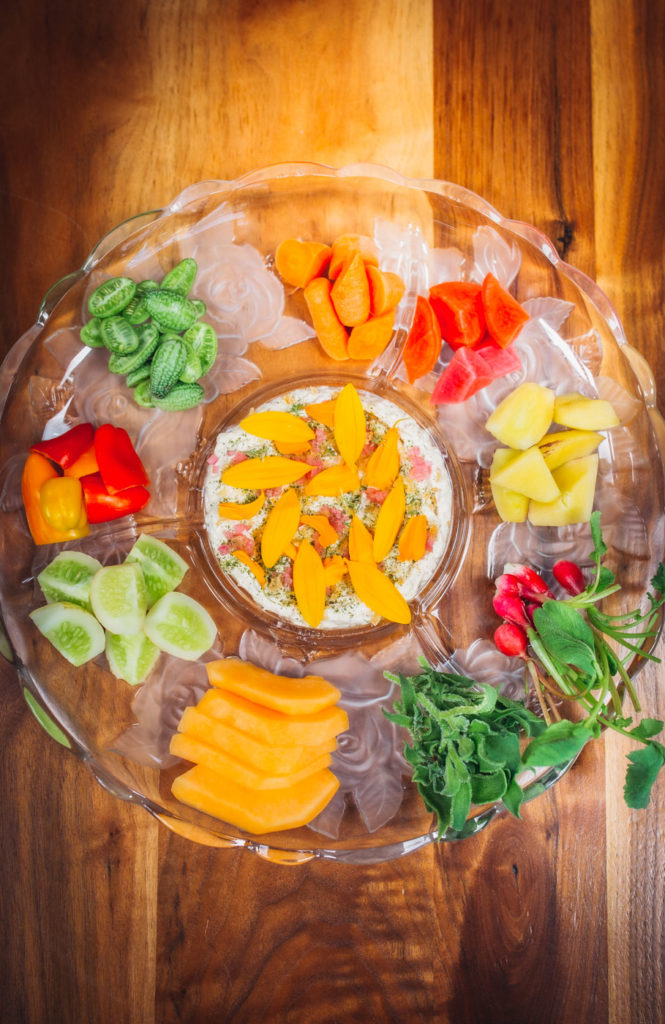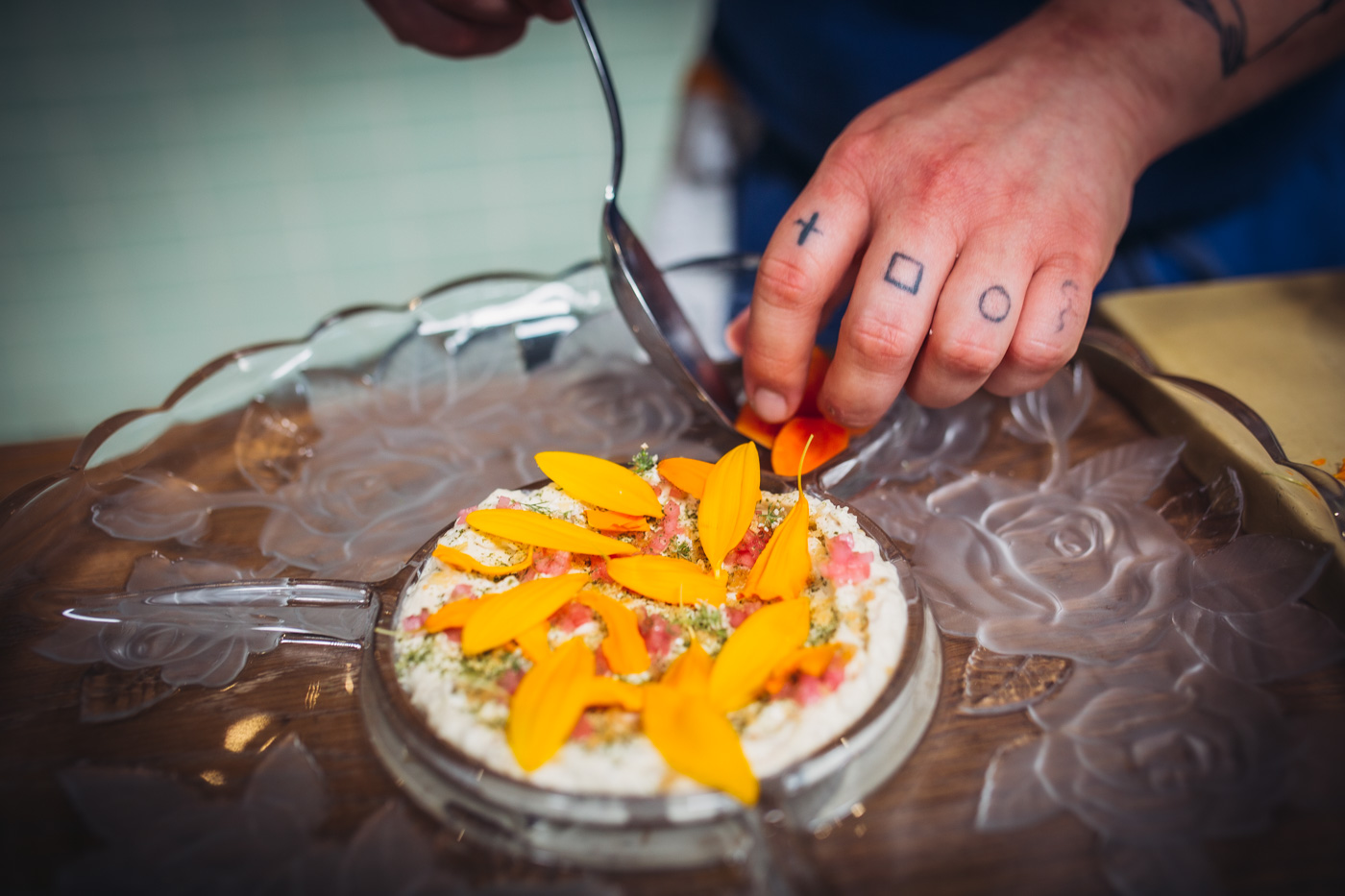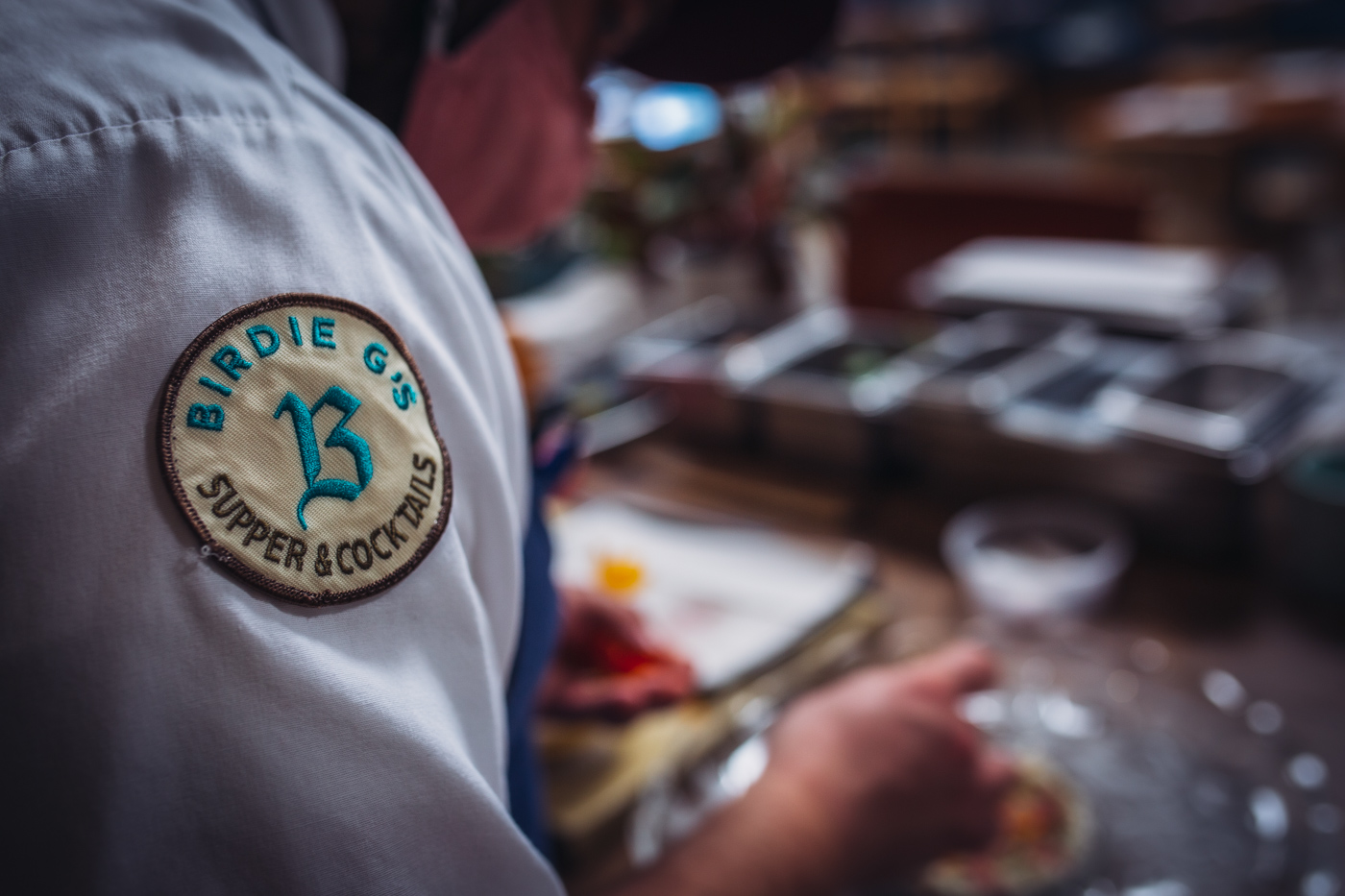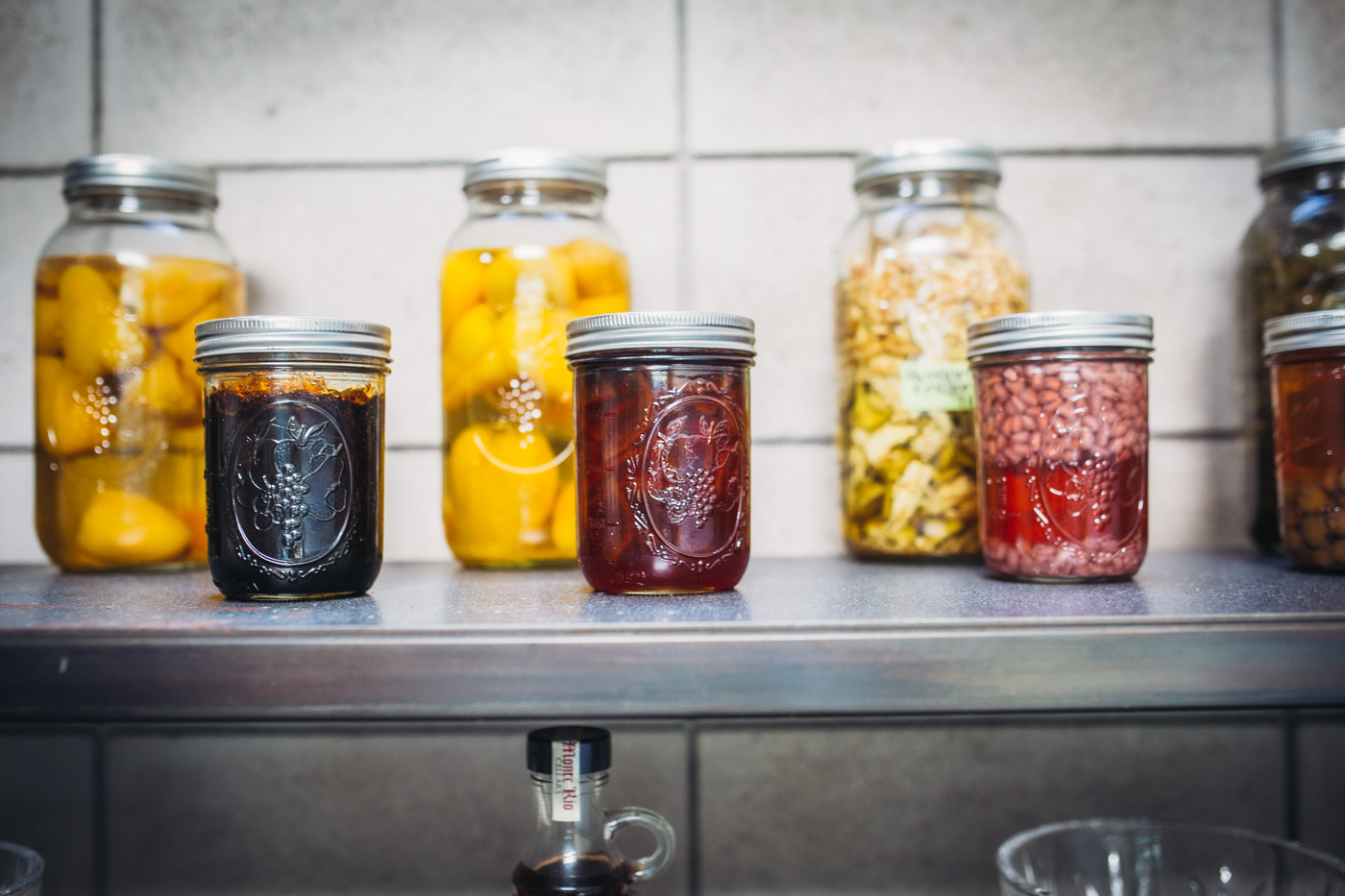What’s the Dish: Birdie G’s Relish Tray
In this installation of What’s the Dish, Birdie G’s Chef de Cuisine Matthew Schaler digs into a menu mainstay, the Relish Tray.
“[Birdie G’s is] a place that I have had the privilege to have an impact on,” says Chef de Cuisine Matthew Schaler. Alongside Executive Chef Jeremy Fox, Schaler has been part of raising the restaurant from infancy and building its culture. “I’ve been here since day one and have witnessed what feels like the life of five restaurants,” Schaler says.
Opened in 2019, Birdie G’s is named after Fox’s daughter, Birdie, and his grandmother, Gladys. Its constantly evolving menu pulls inspiration from around the world—from the Midwest to Eastern Europe—but consistently keeps a spotlight on local farmers and seasonal produce. Birdie G’s is never quite one thing, and it is never stagnant. The food is whimsical and surprising while retaining a sense of comfort.
On the menu you’ll find classics, and not-so-classics, interpreted through the Birdie G’s lens. They’ve put their spin on dishes like matzo ball soup—made with carrots, dill, carrot miso, and a homemade broth—and fried chicken, opting to make it gluten free and serving it alongside dill pickle hot sauce, fresh dill and dill pollen. The bottom of the menu is occupied by Birdie G’s version of a kid’s menu with options like Potato-Crusted Chicken Fingers, a salad they call the Healthy Yucky Green Salad, and fries served with ketchup that is made in-house. On the backside of the menu live cocktails from the comprehensive bar program run by Stephanie Reading and a selection of the wine program built by Rustic Canyon Family Wine Director Kathryn Coker and Birdie G’s Sommelier Chloe Miranda.

Schaler describes how Birdie G’s can be anything for the people who come in—a place for after-work drinks, a place to take kids, or his personal favorite—a place to “come in with friends while drinking interesting wines and hang out with a table covered in food.” He says that at the end of the day, “Birdie G’s is an inclusive place that wants to make you feel comfortable and fed, no matter the occasion.”
Schaler’s impact can be seen throughout the restaurant—from the expansion of the larder to the fermentation program that he was integral in launching and is now showcased across the menu in dishes like the Koji Flatiron Steak and Relish Tray. His work is a natural extension of Birdie G’s no-waste policy, and continues to evolve with the restaurant. “Birdie G’s is still so young, but the people behind it try so hard on a daily basis to make it better,” Schaler says. “We try to do it without pretense and with honesty.”
In this installment of What’s the Dish, we spoke with Schaler about a Birdie G’s classic—the Relish Tray. In many ways, this dish feels representative of Schaler’s work with Birdie G’s and Fox’s propensity toward putting vegetables at the forefront of his food. The classic vegetable tray gets a new life as it passes through the Birdie G’s lens and a mix of local fresh and fermented ingredients are introduced.

What’s the dish called? When was it added to the menu?
The dish is simply known as the Relish Tray. This is a day-one Birdie G’s Dish. This is a dish that has both changed a lot, but also not really changed at all.
What was the concept or inspiration behind creating this dish? Has this dish evolved from its original concept?
A relish tray is a classic American potluck dish. If you’re lucky, there will be some pickles, but usually it’s some variation of crudités. I refuse to compare ours to crudités, but it’s very much a reborn version of these classic vegetable platters.
The dish is constantly changing and we are always looking to create new classics on the tray. Some nights, the offerings might change two or three times. We may have gotten a very limited planting of something cool and only have so many orders to offer on the tray. Other times, we dip into our larder and find something that has aged beautifully that we finally want to use. This dish is a true expression of the hard work the farmers put in, as well as our determination to showcase that.



What are its ingredients? How is the dish prepared?
The center of the plate remains static—a five-onion dip. The idea behind the dip is Lipton’s sour cream and onion dip that I think many people have a reference point of. It’s cream cheese-based and consists of caramelized onions, onion powder, onion flakes (which we make), chive powder, and pickled red onions. The dip is gracefully “plopped” and finished with the prettiest flowers we can get our hands on. We also offer a vegan cashew crema that receives the same garnish treatment.
Surrounding the dip are nine vegetables. We break the items on the relish tray into three components: raw, marinated and fermented. The vegetables change as quickly as the seasons, and oftentimes, it feels like some vegetables leave as soon as they’ve arrived. While the lineup varies, there are a few vegetables that never really leave. Ice plant is something we try to always have, buttermilk carrots are a forever staple, and some version of a root vegetable kimchi as well.
Where do you source the dish ingredients from? What can you tell us about who sells you these items?
We get our vegetables from a variety of farmers. To list them would read like almost every menu from the early 2000s. We are always looking for new items that we’ve never seen before. The farms that you can usually find on the Relish Tray are Girl & Dug, Coleman Family Farms, Weiser Family Farms, The Garden Of and McGrath Family Farms. Honestly, there can sometimes be seven or eight different farms on one plate. Every farm has its own climate, providing its own special variety of a vegetable as well as the accompanying terroir.

Why is this dish important to your restaurant?
This dish is one of the original ideas that just worked. We’ve improved it over the past two years, but the original bones are still there. Birdie G’s is very unassuming on the surface level, but a lot of hard work, technique and time goes into everything that we do. The same is for the Relish Tray. If we are doing our job correctly, each item on the tray looks like a raw vegetable. In reality, the squash might taste like pizza, the carrots are unlike any pickle you’ve had before, and maybe the Romano beans are raw, but that’s only because they are the juiciest and freshest and doesn’t really need any more work done.






Our comments section is for members only.
Join today to gain exclusive access.